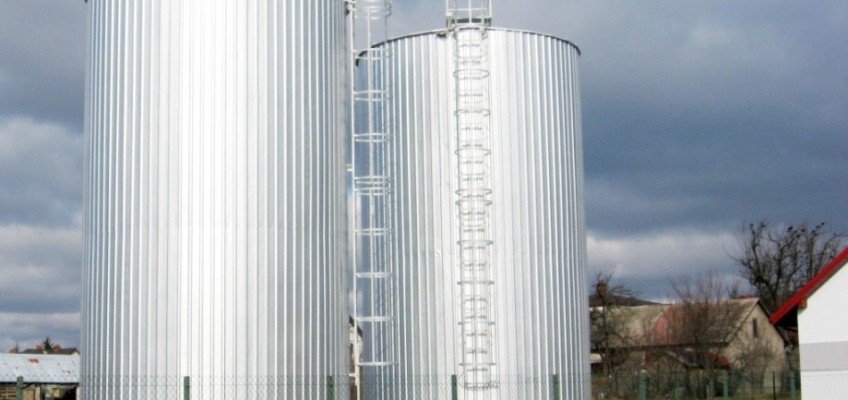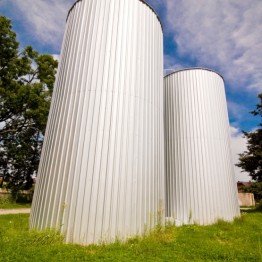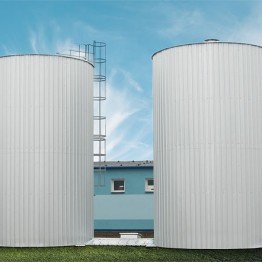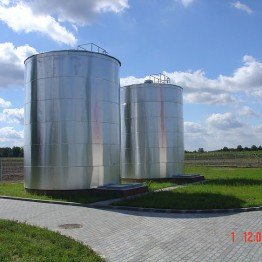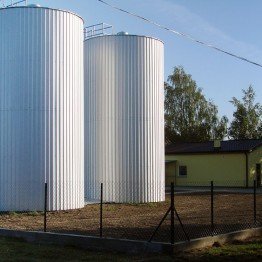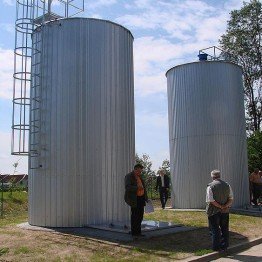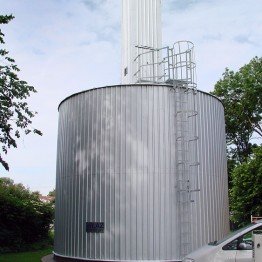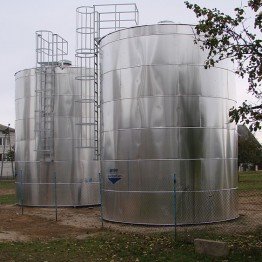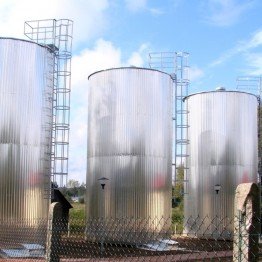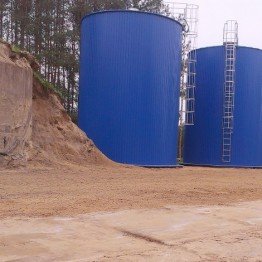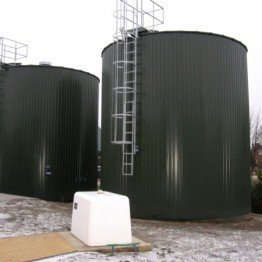ZRVB vertical balance tanks are used in water supply stations for balancing water deficits caused by inadequate productiveness of the source. In addition, the tanks store the water for fire-fighting purposes. ZRVB balance tanks are made of attested low-carbon steel elements.
Structure
The tank consists of a shell in the shape of a vertical cylinder with an inspection manhole, with a flat bottom and tapered cover at the top. It is equipped with the inspection manhole and vent pipe, located on the roof. In addition, the tank is fitted with a ladder, both internal and external, allowing its safe operation. All pipe connections are located at the bottom of the tank and ended with flanges for the pressure p = 1, 0MPa. The weld integrity is verified through penetration test.
Corrosion protection
The inside the tanks is covered with “BRANTHO-KORRUX” coating, approved by the National Institute of Hygiene (PZH). The outside is covered with a universal anti-corrosion coating, twice. Ladders are galvanized.
Insulation
Thermal insulation, made of mineral wool with a thickness of 100 mm, is applied on the outer side of the shell. The roof and manhole are insulated with the use of polystyrene with a thickness of 100 mm. The insulation on the outer side of the tank is typically covered with galvanized steel (troughed, enamelled).
Transport
Depending on the capacity of the tank and the distance to the location where it will be set, tanks are supplied in their entirety or in parts. Thermal insulation and external shell are always assembled on site, after setting the tank on the foundation. Due to the large dimensions of the tanks, they are transported with the use of special means of transport designed for oversized cargo. The Client is obligation to prepare the access to the tank setting places.
Additional options:
- construction of the shell, bottom, cover and supports using the acid-resistant steel of the required grade,
- construction of the shell, bottom and cover using the acid-resistant steel of the required grade, and supports using carbon steel,
- mineral wool insulation with a thickness of 120, 150 mm or other,
- construction of insulation cover using aluminium sheet,
- adjustment of tank parameters to the local requirements (diameter, height, diameter of pipe connections).


